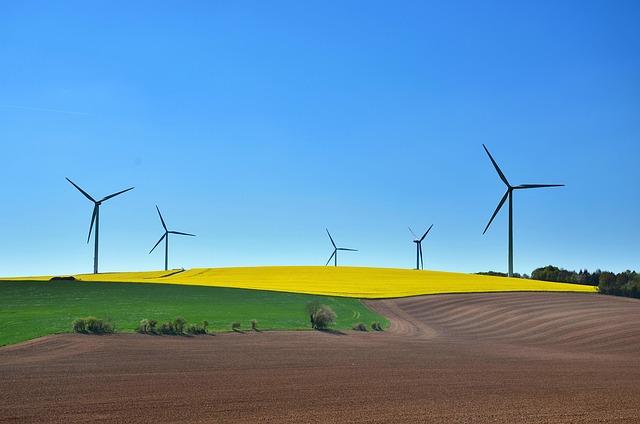Cambodia is taking significant steps to enhance its power import capacity as part of a broader strategy aimed at improving the flexibility adn reliability of its energy supply. With rapid industrial growth and increasing energy demands, the nation is recognizing the necessity of diversifying its energy sources to ensure a stable and lasting power infrastructure. according to recent reports from Reuters, this move comes amid a backdrop of ongoing challenges in the domestic energy sector, including reliance on hydropower and fluctuations caused by climate change. As officials outline their plans to bolster import capabilities, the government aims to not onyl meet the burgeoning energy needs of its population but also to mitigate potential shortages that could hinder economic progress. This article explores the implications of cambodia’s decision to increase its power import capacity, examining the potential benefits and challenges ahead for the Southeast Asian nation.
Cambodia’s Strategic Move to Enhance Power Import Capacity
Cambodia is strategically positioning itself to bolster its power import capacity, enhancing the nation’s ability to adapt and respond to fluctuating energy demands. This initiative is part of a broader effort to diversify energy sources and ensure a reliable electricity supply. By improving import capabilities, the Cambodian government aims to tap into the regional electricity market, enabling it to access power from neighboring countries and thereby increasing the overall stability of its grid.
Key elements of this initiative include:
Investment in Infrastructure: Upgrading transmission lines and interconnections with adjacent nations.
Regulatory Framework: Establishing favorable regulations to attract foreign investment in energy imports.
Sustainability Focus: Prioritizing renewable energy sources in the import strategy to align with global environmental goals.
Aspect
Details
Current Capacity
500 MW
Target Capacity
1,500 MW by 2025
Regional Partners
Thailand, Vietnam, Laos
Investment Required
$150 million

Current Power Challenges Faced by Cambodia’s Energy Sector
Cambodia’s energy sector is currently grappling with a multitude of challenges that threaten its stability and growth potential. The nation has experienced a rapid increase in electricity demand, driven by urbanization and industrialization, yet the supply remains inconsistent. Key issues include:
Dependence on Hydropower: Seasonal variations have led to fluctuations in electricity generation due to reliance on hydro resources,which constitute a significant portion of Cambodia’s energy mix.
Infrastructure Deficiencies: The existing energy infrastructure is not adequately developed to support growing demand, limiting the reliability of service delivery.
Regulatory Framework: A lack of robust policies and regulations has hindered investment in renewable energy and advanced technologies needed for a sustainable energy future.
In response to these pressing issues, the Cambodian government has recognized the need to diversify its energy sources and increase its import capacity. This strategic shift aims to enhance the flexibility of the power supply,allowing for a more resilient and dependable energy system. Key initiatives include:
Strengthening Regional Grid Connections: Enhancing interconnections with neighboring countries to facilitate electricity importation during peak demand periods.
Investment in Renewable Energy: Encouraging private sector investment in solar, wind, and biomass projects to reduce reliance on conventional energy sources.
Challenges
Potential Solutions
Dependence on Hydropower
Diversify energy mix with renewable sources
Infrastructure Deficiencies
Invest in modern energy infrastructure
Regulatory Framework
implement supportive policies for investment

Potential Benefits of Increased Power flexibility
Increased power flexibility can substantially enhance energy security and reliability for Cambodia.By diversifying energy sources through enhanced import capacities, the nation can reduce its dependence on domestic generation, which may be constrained by fluctuations in local production. The ability to import power from neighboring countries not only stabilizes supply but also fosters competitive pricing, thereby benefiting consumers and businesses alike. Additionally, this flexibility allows for a more sustainable energy mix, adapting to varying environmental conditions and demand peaks.
Moreover, the integration of imported energy can accelerate technological advancements and investment in the energy sector. With greater access to various energy resources, Cambodia can attract foreign investment, enhancing infrastructure advancement and job creation. Key advantages include:
Improved Energy Resilience: A robust energy import strategy can buffer against local energy shortages caused by natural disasters or equipment failures.
Diverse Energy Portfolio: Sourcing from multiple suppliers reduces risks associated with relying on a single energy source.
Lower Emissions: Flexibility can promote the use of renewable energy imports, contributing to a greener energy transition.

Key Infrastructure developments Needed for Improved Connectivity
To enhance connectivity, Cambodia will need to focus on several vital infrastructure developments. First and foremost, upgrading transmission lines and substation facilities will ensure that the increased power import capacity can be effectively integrated into the existing grid. This upgrade will support consistent power supply and reduce transmission losses. Moreover, investments in renewable energy sources such as solar and hydroelectric plants will diversify energy production, making the grid more resilient and sustainable.
Additionally, improving interconnection projects with neighboring countries, such as Vietnam and Thailand, is crucial for creating a more flexible energy market. These projects not only facilitate cross-border power trade but also enable Cambodia to access a broader energy mix at competitive prices. Key areas for development include:
Enhanced Grid Systems: Modernizing existing infrastructure to handle increased loads.
Smart Metering Technologies: Implementing advanced metering for better energy management.
Regulatory Frameworks: Establishing conducive regulations to attract investments.
Infrastructure Development
Benefits
High-Voltage Transmission Lines
Reduction in energy loss & improved reliability
Cross-Border Interconnectors
Access to diverse energy resources & competitive pricing
Renewable Energy Projects
sustainable energy supply & environmental benefits

Recommendations for Sustainable and Reliable Energy Imports
As Cambodia intensifies its efforts to increase power import capacity, several key strategies emerge to ensure energy imports are both sustainable and reliable. Firstly, diversifying import sources can mitigate risks related to supply disruptions. by establishing partnerships with neighboring countries, such as Thailand, Vietnam, and Laos, Cambodia can harness a mix of renewable and non-renewable energy sources. This approach not only enhances energy security but also promotes regional cooperation in managing resources. Additionally, investing in infrastructure improvements, such as modernizing transmission systems, is crucial to facilitate smoother import processes and reduce energy losses during transport.
Furthermore, prioritizing renewable energy imports should be a vital component of Cambodia’s energy strategy. Expanding initiatives to import solar and hydropower can significantly contribute to achieving national sustainability goals while minimizing environmental impacts. To streamline this effort, establishing a regulatory framework that encourages private investment in renewable energy projects is essential.Moreover, fostering public-private partnerships could bolster capacity for technology exchange and innovation. A potential table to illustrate the focus areas for energy imports is outlined below:
Focus Area
Action Steps
Diversification of Sources
Engage with neighboring countries for multi-source imports
Infrastructure Investment
Upgrade transmission networks to reduce energy loss
Renewable Energy Imports
Develop frameworks for solar and hydropower projects
Public-Private Partnerships
Encourage collaboration on technology and investment

The Role of Regional Partnerships in Strengthening Energy Security
Regional partnerships play a crucial role in enhancing energy security, especially as countries like Cambodia look to diversify their energy sources and boost resilience against supply disruptions. Collaborating with neighboring nations can lead to shared infrastructure investments, such as cross-border power lines, which not only increase the flow of electricity but also help stabilize regional markets. These alliances can facilitate knowledge exchange and technology sharing, allowing for innovative solutions to emerge and optimize energy use.Moreover, stronger regional ties pave the way for joint energy projects, which can enhance the reliability and sustainability of energy supplies.
Moreover, as Cambodia seeks to increase its power import capacity, forming strategic partnerships can offer a multifaceted approach to energy management. A few key benefits include:
Diversified Energy Sources: Access to energy from multiple suppliers reduces dependency on any single source.
Cost Efficiency: Collaborative purchasing and shared infrastructure can significantly lower costs.
Risk Mitigation: Regional cooperation can buffer against geopolitical or environmental disruptions.
By fostering these partnerships, Cambodia can create a more flexible and resilient energy framework that supports not just domestic needs but also contributes to broader regional stability.
Future Outlook
Cambodia’s strategic initiative to enhance its power import capacity signifies a pivotal step towards achieving greater energy flexibility and reliability. By diversifying its energy sources and reducing dependency on domestic production, the nation aims to foster sustainable growth and meet the increasing demand for electricity. As regional dynamics evolve and energy markets become more interconnected, Cambodia’s move could not only stabilize its energy landscape but also position it as a key player in the ASEAN power sector. Stakeholders will be closely monitoring the ongoing developments to assess the implications for energy security and economic resilience in the years to come.
—-
Author : Asia-News
Publish date : 2025-03-18 09:35:14
Copyright for syndicated content belongs to the linked Source.